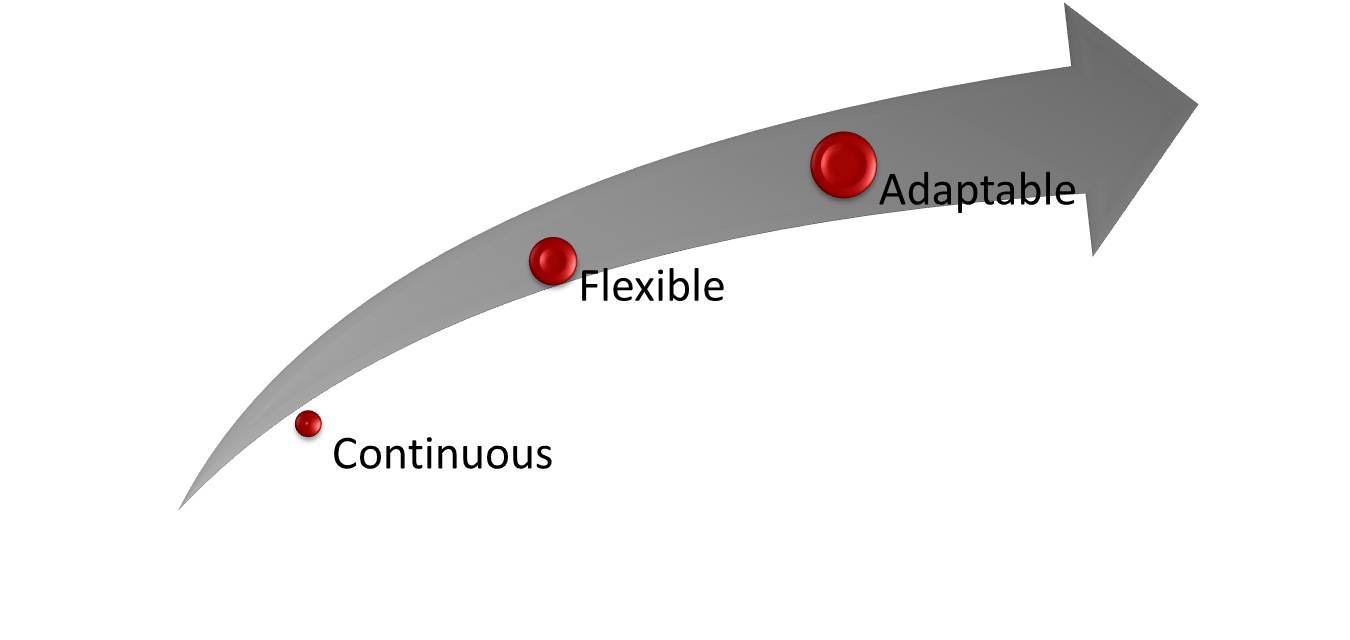It is with no intended humour that I speculate that there are law firms claiming success in achieving their strategic targets having done so by shooting first and calling whatever they hit their target.
Many law firms have thrown up their hands in disgust, frustration, and defeat throughout their strategic planning exercise for myriad reasons. The reasons for quitting generally fall into three main categories:
1. Destination versus journey: many consultants, and in turn firms, have approached strategic planning as the document generated at the end of the exercise as the critical product rather than the process and interactions being the partners as being where the real value lies.
2. Complexity versus simplicity: it must look five years out; must address all the perceived sins of the firm; and must leave nothing to interpretation (often over wordsmithed).
3. Approval versus buy-in: because it is believed that a group can’t develop a plan, in many firms a committee takes charge and presents their written plan for “approval” by the partners and often consent is mistakenly taken for “buy-in.”
It doesn’t have to be this way, if firms would simply change their perspective on the strategizing cycle.

Embracing the exercise as a process and grasping that dialogue among the partners is the true value from going through the cycle dramatically as it increases the odds of making progress towards a few common goals. The beauty of such a simple approach is that it works irrespective of the size of the firm.
The attributes of such an approach are that it is continuous, flexible, and adaptable.
There are three stages to a process-oriented approach to strategizing. They are:
1. strategic thinking process;
2. strategic action process; and
3. annual execution process.

In the strategic thinking process stage what you are attempting to achieve is:
• clarifying what is important (values);
• setting a direction (vision); and
• determining what will get you there.
Achieving some common ground on values and vision certainly requires dialogue among partners. The above steps are presented in the sequence they should be undertaken because agreeing on what the partners “value” is the only foundation upon which a successful strategizing process can be based.
One important consideration when determining what the partners value — is if they are not prepared to be held accountable to meet and agree to its enforcement it is not something the partners value! There are perceived to be three broad classes of values and in an article by Eric Seeger of Altman Weil, Inc., published in the October 2011 issue of
Law Firm Partnership & Benefits Report they are identified as:
•
Contribution: economic, non-economic, participation in firm management, recruiting, mentoring/training, business development, involvement in the community, etc.
•
Behavioural: teamwork, work ethic, commitment to service excellence, following firm policies, treating others with respect, stewardship of firm resources, availability, accessibility, timekeeping, billing and collecting, etc.
•
Character: honouring commitments, being true to one’s word, enhancing the firm’s reputation, exhibiting the highest ethical standards, demonstrating a firm-first orientation, etc.
What firms are attempting to achieve in the strategic action process stage is to define achievement; clarify what is required; and determine what is required to execute.
This is the stage where the proverbial rubber begins to hit the road as you move from concept to the broader goals to the initiatives that will support these goals to the objectives which in turn support accomplishing the initiatives. So we don’t lose anyone in an abstract discussion of what is a goal and what is an objective and are they not one and the same, the following is an example of the three:
•
Goal- Growth of the firm
•
Initiatives - Business development in new industries
- Business process management
- Develop new service offerings
•
Objectives - Execute practice group plans
- Implement industry service teams
- Automate client intake processes
- Perform a review of all vendors
- Deploy key performance indicator dashboards for partners
- Survey key clients on their alternative fee arrangement needs
The third and final stage of the strategizing cycle is the annual execution process. This process deals with aligning specific actions/steps to the objectives identified in the previous process and in so doing deals with the following:
• Identification of what is to be done in the current fiscal year to achieve any objective;
• Assigning who will own it and who will do it;
• Setting dates when it will be done by; and
• Establishing the budget for executing the action.
A note of caution: while there is real risk of potential failure during each process, the risk runs the highest in the annual execution process. The reasons for this likely vary from failure to failure, but some common ones would include:
• Things “creep” into the annual business plan that don’t align with any of the objectives generated in the strategic action process — ends up diverting time and resources away from objectives;
• There is no real accountability for the execution of the action step by the “owner” of the action rather the focus is fixated on the doer, who normally is in a lesser position of authority;
• The timelines are sufficiently vague that many action steps suffer from a last-minute/ditched effort and the efforts reflect this lack of timely planning and execution; and
• Lip service is paid to the willingness of the partners to invest the money into the action or as a result of a change in economics there is unwillingness and this is not communicated to the doer or the partners.
The old adage “if you don’t know where you are going how will you know when you get there” is very true in the legal industry today. But it does not have to be that way if firms would simply revert to a process oriented strategizing cycle.
Strategizing, given today’s economic environment, client orientation towards more for less, technology, firm convergence, generational differences, etc. has taken on an increasing significance in the role it will play in separating the successful from the not-so-successful law firms.
Clarity of purpose will go a long way towards reducing uncertainty and increasing engagement of lawyers and staff in your firms.
Until the next column, remember as Peter Drucker is attributed as having said “The best plan is only good intentions unless it degenerates into work.”

 Embracing the exercise as a process and grasping that dialogue among the partners is the true value from going through the cycle dramatically as it increases the odds of making progress towards a few common goals. The beauty of such a simple approach is that it works irrespective of the size of the firm.
Embracing the exercise as a process and grasping that dialogue among the partners is the true value from going through the cycle dramatically as it increases the odds of making progress towards a few common goals. The beauty of such a simple approach is that it works irrespective of the size of the firm. In the strategic thinking process stage what you are attempting to achieve is:
In the strategic thinking process stage what you are attempting to achieve is: